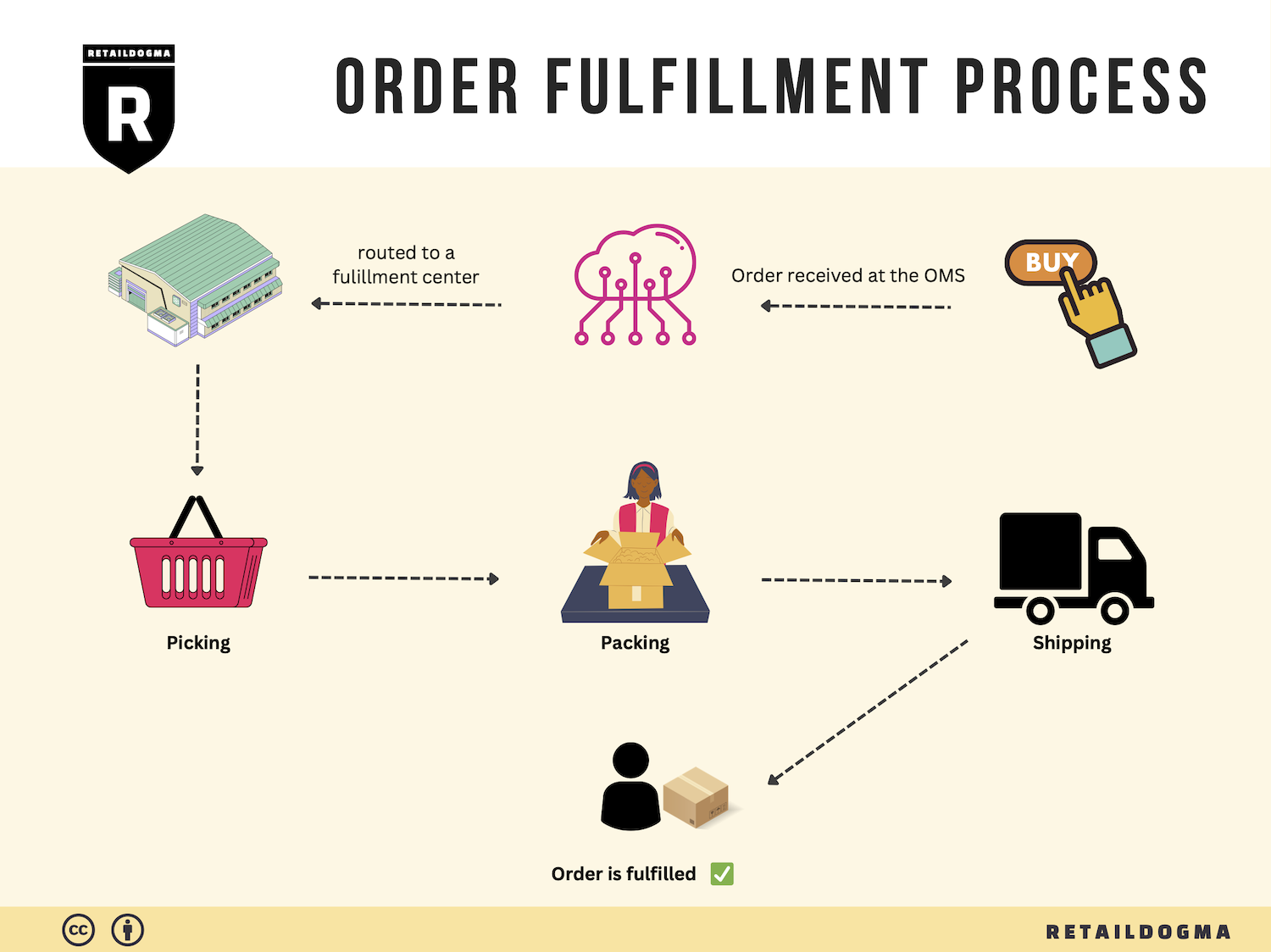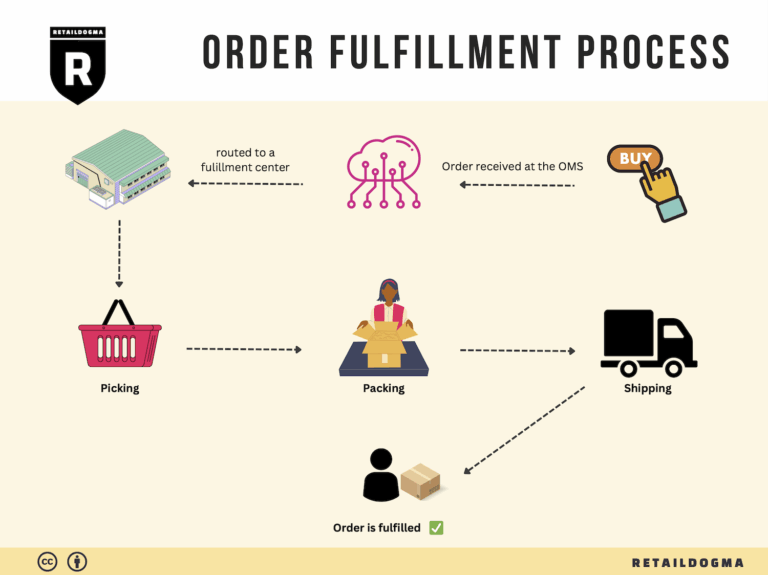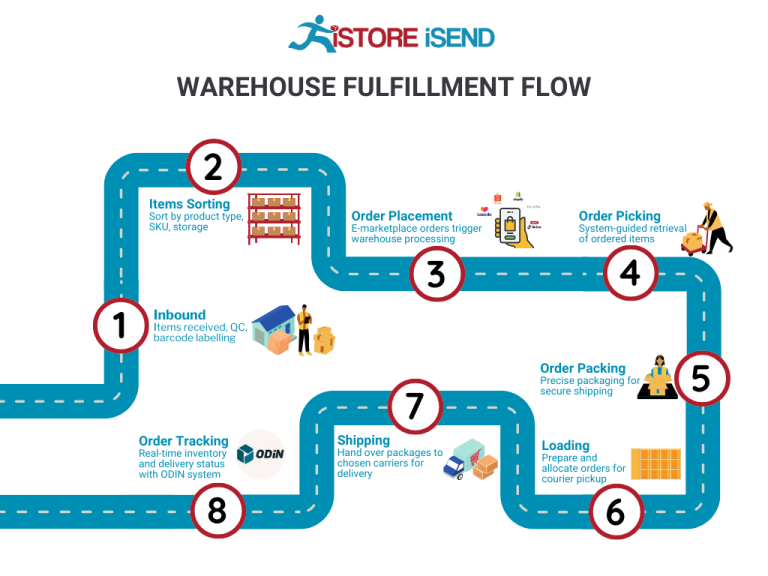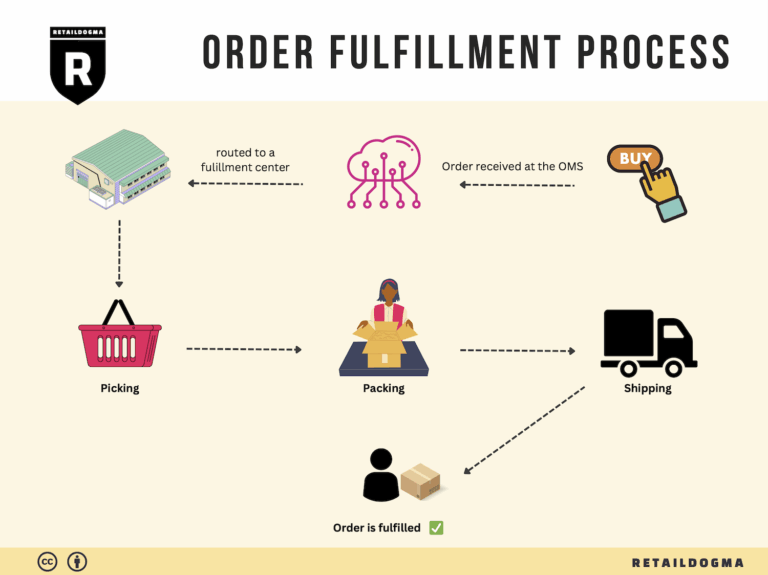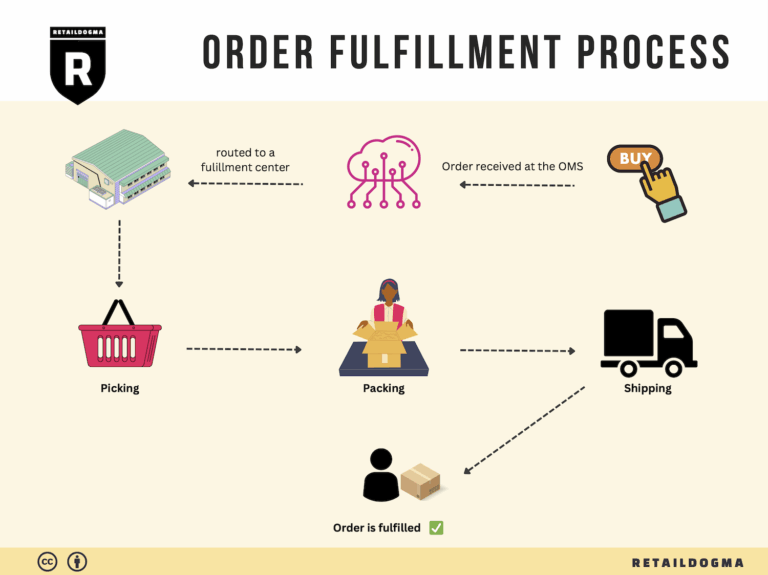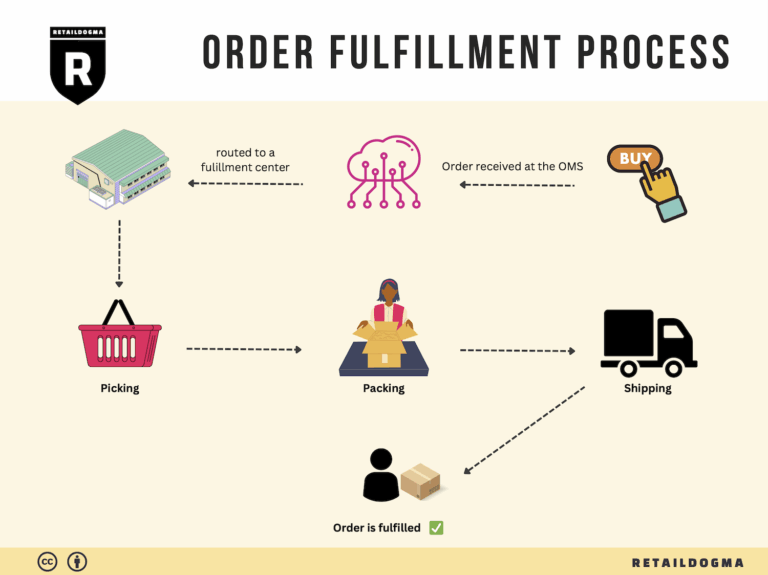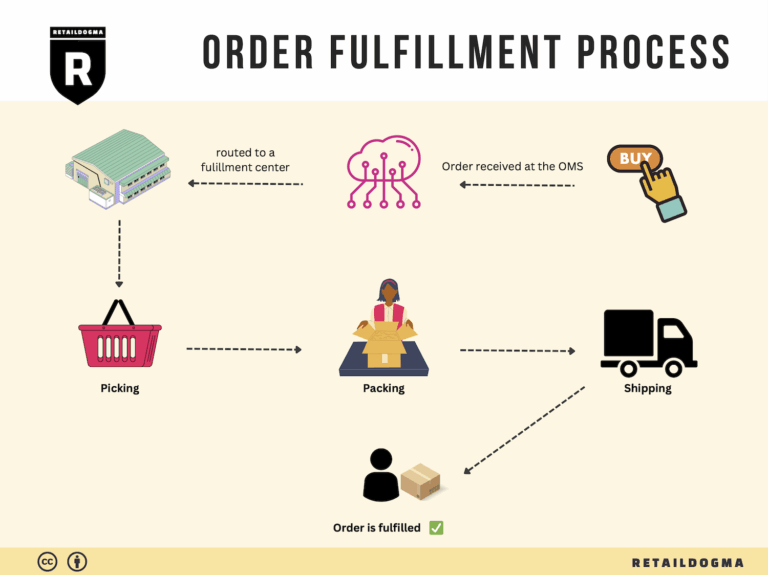What Is A Fulfillment Center? A Complete Guide (2025)
What is E-commerce Fulfillment? An Introduction for Growing Businesses
As e-commerce continues to flourish, many growing online businesses find themselves grappling with the complexities of packing and shipping orders. The excitement of driving sales can quickly turn into a daunting challenge when faced with the operational demands of fulfilling those orders. If you’re overwhelmed by the logistics of getting products to your customers, you’re not alone. Many entrepreneurs struggle with these growing pains, and that’s where understanding e-commerce fulfillment becomes essential.
What is E-commerce Fulfillment?
At its core, fulfillment is the entire process of getting a product from your warehouse to the customer’s doorstep. This includes storing inventory, processing orders, picking and packing items, and shipping them out. A well-structured fulfillment strategy can significantly enhance your operational efficiency, allowing you to focus on scaling your business rather than getting bogged down by logistics.
What This Guide Will Cover
In this guide, we will explore various fulfillment models available to e-commerce businesses, such as Third-Party Logistics (3PL) and Fulfilled by Amazon (FBA). Each model has its unique advantages and can cater to different business needs, whether you’re a startup or an established brand.
Additionally, we’ll delve into the core services that fulfillment providers typically offer, including inventory management, order processing, packaging, shipping, and returns handling. Understanding these services is crucial for selecting the right partner for your business.
Choosing the right fulfillment partner is another critical aspect we will cover. We’ll discuss key criteria to consider, such as location, technology integration, scalability, and cost-effectiveness.
Lastly, we will provide insights into pricing structures for fulfillment services, helping you understand how to budget for these essential logistics operations.
Empowering Your Business Decisions
The goal of this guide is to empower you to make informed decisions about your logistics strategy. By understanding the intricacies of e-commerce fulfillment, you can optimize your operations, reduce costs, and ultimately enhance customer satisfaction. Whether you’re just starting or looking to refine your existing processes, this guide will equip you with the knowledge to elevate your e-commerce business to new heights.
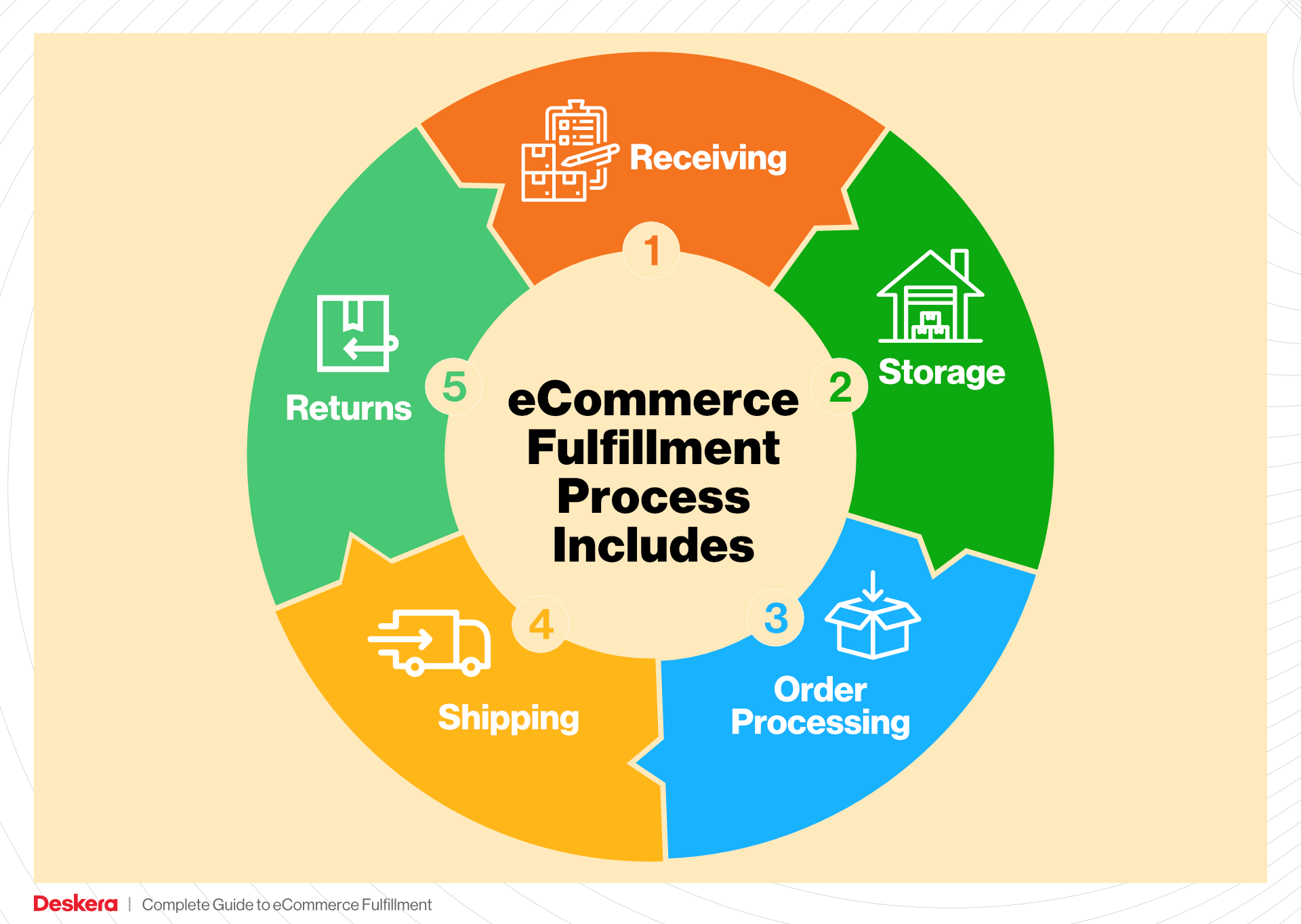
What You’ll Learn In This Guide
- What is E-commerce Fulfillment? An Introduction for Growing Businesses
- The Order Fulfillment Process: From ‘Buy’ Button to Customer’s Door
- Comparing Fulfillment Models: In-House vs. 3PL vs. Dropshipping
- A Deep Dive into Amazon FBA: Pros, Cons, and Who It’s For
- Core Services Offered by Fulfillment Centers
- How to Choose a Fulfillment Partner: A 6-Point Checklist
- Understanding Fulfillment Pricing: A Breakdown of Common Fees
- Frequently Asked Questions (FAQs) about Fulfillment
- Conclusion: Is Outsourcing Fulfillment the Right Move for Your Business?
- Important Disclaimer
The Order Fulfillment Process: From ‘Buy’ Button to Customer’s Door
1. Receiving Inventory
The order fulfillment process begins with receiving inventory from suppliers or manufacturers. This step involves checking the incoming shipments against purchase orders to ensure accuracy in quantity and quality. Each item is typically assigned a Stock Keeping Unit (SKU), which is a unique identifier that helps streamline inventory management.
Importance: Accurate receiving is critical as it sets the foundation for the entire fulfillment process. Any discrepancies at this stage can lead to stockouts or overstock situations, which can negatively impact customer satisfaction and operational efficiency. Properly received inventory ensures that businesses have the right products available for order fulfillment.
Key Term: SKU (Stock Keeping Unit) – A unique identifier for each product that helps in tracking inventory efficiently.
2. Warehouse Storage
Once the inventory is received and verified, it is stored in a designated warehouse space. Effective storage involves organizing products in a manner that maximizes space and facilitates easy access. Items can be categorized based on various criteria, such as type, size, or sales velocity, and stored on shelves or pallets in a systematic manner.
Importance: Proper warehouse storage is essential for efficient order processing. It minimizes the time and effort required for picking products when an order is placed. A well-organized warehouse reduces clutter and enhances productivity, allowing for quicker response times to customer orders.
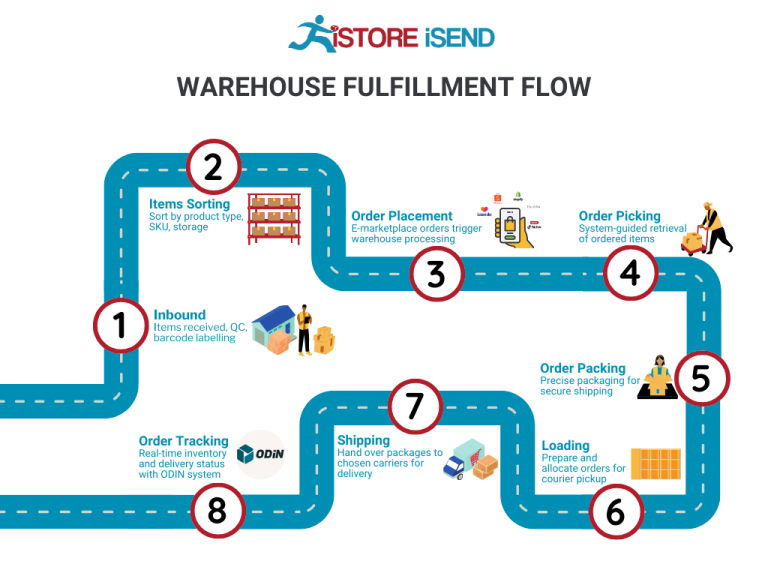
Key Term: FIFO (First In, First Out) – A method of inventory management where the oldest stock is sold first, ensuring that products are sold before they expire or become obsolete.
3. Order Picking
When a customer places an order, the next step is order picking, where warehouse staff locate and retrieve the items specified in the order. This process is often guided by pick lists, which outline the items and quantities needed for each order. Depending on the volume and complexity of orders, various picking methods can be employed, such as single order picking, batch picking, or wave picking.
Importance: Efficient order picking is crucial for fulfilling customer orders accurately and promptly. Mistakes during this stage can lead to incorrect shipments, resulting in returns and customer dissatisfaction. Streamlining the picking process can significantly improve order fulfillment speed and accuracy, enhancing the overall customer experience.
Key Term: Pick List – A document that lists the items to be picked for a specific order, including their locations within the warehouse.
4. Order Packing
After items are picked, they are moved to the packing station, where they are prepared for shipping. This step involves checking the picked items against the original order to ensure accuracy, packing them securely in appropriate materials, and labeling the packages for shipment. Attention to detail is critical, as well as using the right packing materials to prevent damage during transit.
Importance: Order packing is vital as it directly impacts the customer’s first impression of the brand upon receiving the product. Properly packed orders reduce the risk of damage during shipping, minimize returns, and enhance customer satisfaction. Efficient packing processes can also lead to reduced shipping costs by optimizing package dimensions.
Key Term: Packing Slip – A document included with a shipment that lists the items contained in the package, serving as a receipt for the customer.

5. Shipping & Delivery
The final step in the order fulfillment process is shipping and delivery. Once the order is packed, it is handed over to a logistics partner for transportation to the customer’s address. Businesses often utilize various shipping methods, including ground, air, or expedited services, depending on customer preferences and urgency. Tracking information is usually provided to customers to monitor their order status.
Importance: Timely and reliable shipping is essential for maintaining customer satisfaction and loyalty. Effective shipping strategies can lead to repeat business and positive word-of-mouth. Furthermore, leveraging partnerships with reputable carriers can enhance delivery speed and reliability.
Key Term: Tracking Number – A unique identifier assigned to each shipment that allows customers to track their order in real-time until it reaches their destination.
By understanding and optimizing each step of the order fulfillment process, e-commerce businesses can significantly enhance their operational efficiency, reduce costs, and improve customer satisfaction. With the right strategies and tools in place, businesses can effectively scale their operations and meet growing customer demands.
Comparing Fulfillment Models: In-House vs. 3PL vs. Dropshipping
Fulfillment Models Overview
When considering how to fulfill orders efficiently as an e-commerce business, understanding the different fulfillment models is crucial. Each model has its own advantages and disadvantages, and the choice will significantly influence operational efficiency, customer satisfaction, and ultimately, profitability. Below is a comparison of three primary fulfillment models: In-House Fulfillment, Third-Party Logistics (3PL), and Dropshipping.
| Model | Who Handles Inventory | Best For (Business Stage) | Key Advantage | Key Disadvantage |
|---|---|---|---|---|
| In-House Fulfillment | The business itself | Established businesses | Full control over inventory and processes | High upfront costs and operational complexity |
| Third-Party Logistics (3PL) | A third-party logistics provider | Growing businesses | Scalability and reduced operational burden | Less control over inventory and fulfillment speed |
| Dropshipping | Supplier or manufacturer | Startups and small businesses | Low risk and minimal upfront investment | Lower profit margins and less control over product quality |
In-House Fulfillment
In-house fulfillment involves a business managing its own warehousing, inventory, and shipping processes. This model is often favored by established businesses that have the resources to invest in a dedicated fulfillment infrastructure. One of the primary advantages of in-house fulfillment is the complete control it offers over inventory management, order processing, and shipping. Businesses can tailor their processes to meet specific needs and maintain high-quality standards throughout. However, the key disadvantage is the high upfront costs associated with leasing or purchasing warehouse space, hiring staff, and investing in necessary technology and equipment. Additionally, as order volumes fluctuate, businesses may face challenges in managing inventory levels and operational complexity, which can strain resources.
Third-Party Logistics (3PL)
Third-party logistics (3PL) refers to outsourcing fulfillment operations to specialized logistics providers. This model is particularly beneficial for growing businesses that want to scale quickly without the burden of managing logistics in-house. A significant advantage of partnering with a 3PL is the scalability it provides; businesses can easily adjust their fulfillment capabilities in response to fluctuating demand without investing heavily in additional resources. Furthermore, 3PL providers often have established relationships with carriers, leading to potentially lower shipping rates and faster delivery times. However, the downside is that businesses may experience less control over their inventory and fulfillment processes, which can lead to variability in service quality and longer lead times if the 3PL fails to meet expectations.
Dropshipping
Dropshipping is a fulfillment model where the retailer does not hold inventory but instead forwards customer orders to a supplier or manufacturer, who then ships the products directly to the customer. This model is especially appealing for startups and small businesses due to its low-risk nature and minimal upfront investment. Entrepreneurs can launch their e-commerce stores without the need to purchase inventory upfront, significantly lowering the financial barrier to entry. However, the primary disadvantage of dropshipping is the lower profit margins, as suppliers typically charge higher prices per unit. Moreover, businesses have limited control over product quality, shipping times, and inventory levels, which can lead to customer dissatisfaction if the supplier fails to deliver as promised.
Conclusion
Choosing the right fulfillment model is a critical decision that can impact your e-commerce business’s operational efficiency and customer satisfaction. In-house fulfillment offers control but requires significant investment and operational complexity. Third-party logistics (3PL) provides scalability and reduced burden, making it ideal for growing businesses. Dropshipping presents a low-risk entry point for startups but comes with challenges in profit margins and control over the supply chain. Ultimately, the best model for your business will depend on your current stage, resources, and long-term growth strategy. Each model has its own unique strengths and weaknesses, and understanding these will enable you to make informed decisions as you scale your e-commerce operations.
A Deep Dive into Amazon FBA: Pros, Cons, and Who It’s For
What is Fulfillment by Amazon (FBA)?
Fulfillment by Amazon (FBA) is a service provided by Amazon that allows sellers to store their products in Amazon’s fulfillment centers. Amazon then takes care of storage, packaging, shipping, and customer service for these products. This means that when a customer purchases an item listed by a seller using FBA, Amazon handles the entire process—from packing the product to shipping it directly to the customer. Additionally, FBA products are eligible for Amazon Prime and offer the convenience of Amazon’s customer service and return handling.
The process begins when a seller sends their products to an Amazon fulfillment center. Once the products are stored, they become part of Amazon’s inventory. When an order is placed, Amazon picks, packs, and ships the product on behalf of the seller. Sellers can track their inventory levels and sales through the Amazon Seller Central dashboard, which provides insights into performance metrics, sales trends, and customer feedback.
How Does FBA Work?
-
Setup: Sellers create an Amazon seller account and enroll in FBA. They then create product listings and prepare their items for shipment to an Amazon fulfillment center.
-
Inventory Management: After shipping their products to Amazon, sellers can manage their inventory through the Seller Central dashboard, which provides real-time data on stock levels, sales, and performance.
-
Order Fulfillment: When a customer orders a product, Amazon’s system automatically processes the order. The product is picked from the inventory, packed, and shipped directly to the customer.
-
Customer Service: Amazon handles all customer inquiries and returns for FBA orders, providing a seamless experience for both sellers and buyers.
-
Payment: After the product is sold, Amazon pays the seller, minus applicable fees, which are based on the size and weight of the product.
Pros of FBA
1. Prime Eligibility
One of the most significant advantages of FBA is that products become eligible for Amazon Prime. This opens up a vast customer base, as Prime members often prefer to buy products that offer free two-day shipping. This can lead to increased sales and visibility on the platform.
2. Customer Trust
Utilizing FBA can enhance customer trust. Buyers are often more likely to purchase items fulfilled by Amazon due to the perceived reliability of Amazon’s logistics and customer service. Positive customer experiences can translate into better reviews and higher seller ratings.
3. Multi-Channel Fulfillment
FBA is not limited to Amazon sales. Sellers can use FBA to fulfill orders from their own websites or other sales channels. This multi-channel fulfillment capability allows businesses to streamline their logistics while benefiting from Amazon’s infrastructure.
4. Reduced Operational Burden
By outsourcing fulfillment to Amazon, sellers can focus on other aspects of their business, such as marketing, product development, and customer engagement. This can significantly reduce the operational burden on small businesses or new entrepreneurs.
5. Access to Advanced Technology
Amazon provides advanced technology for inventory management, tracking, and analytics. Sellers can benefit from these tools without having to invest in their own logistics systems.
Cons of FBA
1. High Fees
FBA fees can accumulate quickly, especially for sellers with low-margin products. Fees include storage fees, fulfillment fees, and additional charges for long-term storage. Sellers need to carefully calculate their costs to ensure profitability.
2. Strict Inventory Rules
Amazon has stringent policies regarding inventory management, including requirements for packaging and labeling. Sellers must adhere to these rules to avoid penalties or the removal of their listings.
3. Commingling Risks
With FBA, products from different sellers may be stored together, a practice known as commingling. This can lead to issues if a seller’s products are mixed with those of lower quality, potentially affecting customer satisfaction and the seller’s reputation.
4. Loss of Control Over Fulfillment
While outsourcing fulfillment can reduce workload, it also means sellers relinquish control over the packing and shipping process. This can be a disadvantage for those who prioritize a specific customer experience.
5. Inventory Limits
Amazon imposes limits on how much inventory sellers can send to fulfillment centers, particularly for new sellers. This can restrict the ability to scale quickly, especially during peak sales seasons.
Who is FBA Best For?
FBA is particularly beneficial for small to medium-sized e-commerce businesses looking to scale their operations without the burden of managing logistics. It is ideal for:
- New Entrepreneurs: Those starting their first e-commerce business can benefit from Amazon’s established platform and customer trust.
- Businesses with High Sales Volume: Sellers who have a consistent and significant sales volume can better absorb FBA fees and maximize their profit margins.
- Sellers with Diverse Product Lines: Those selling various products across multiple categories can take advantage of the multi-channel fulfillment capability of FBA.
- Brands Focused on Customer Experience: Companies that prioritize customer satisfaction and want to leverage Amazon’s customer service can find FBA to be an effective solution.
In conclusion, while FBA offers substantial advantages in terms of logistics and customer trust, it is essential for sellers to weigh these benefits against the associated costs and risks. By understanding both the pros and cons, e-commerce business owners can make informed decisions about whether FBA aligns with their operational goals and business strategies.
Core Services Offered by Fulfillment Centers
Inventory Management & Warehousing
Inventory management and warehousing are foundational services provided by fulfillment centers that play a critical role in the e-commerce ecosystem. This service involves the storage of goods in a secure and organized facility, where advanced technology systems track inventory levels, product locations, and stock movements in real-time.
Benefits for E-commerce Businesses:
-
Optimal Stock Control: Fulfillment centers utilize sophisticated inventory management systems that provide businesses with accurate, real-time data about stock levels. This helps in preventing overstocking or stockouts, which can negatively impact sales and customer satisfaction.
-
Cost Efficiency: By outsourcing warehousing, e-commerce businesses can avoid the substantial costs associated with leasing or maintaining a warehouse. This is particularly advantageous for small to medium-sized enterprises (SMEs) that may not have the capital to invest in physical space.
-
Scalability: As an e-commerce business grows, its inventory requirements can change dramatically. Fulfillment centers offer scalable solutions that allow businesses to increase or decrease their storage space as needed without the complexities of managing their own facilities.
-
Enhanced Operational Focus: With inventory management handled by a fulfillment partner, business owners can focus on core activities such as marketing, product development, and customer engagement, rather than the logistical challenges of warehousing.
Pick and Pack Services
Pick and pack services refer to the process of retrieving ordered items from inventory (picking) and preparing them for shipment (packing). This service is crucial for fulfilling customer orders efficiently and accurately.
Benefits for E-commerce Businesses:
-
Speed and Accuracy: Fulfillment centers are equipped with technology that streamlines the picking process, ensuring that items are retrieved quickly and accurately. This reduces the likelihood of errors, which can lead to customer dissatisfaction and return rates.
-
Labor Efficiency: By leveraging the expertise of fulfillment center staff, e-commerce businesses can significantly reduce the time spent on order processing. Skilled personnel use optimized picking methods, which can lead to faster turnaround times for orders.
-
Customized Packing Solutions: Fulfillment centers often provide tailored packing solutions, including branded packaging options that enhance the unboxing experience for customers. This attention to detail can strengthen brand loyalty and improve customer satisfaction.
-
Reduced Operational Burden: By outsourcing pick and pack services, businesses can free up internal resources, allowing them to reallocate labor to areas that drive growth and innovation.
Kitting and Assembly
Kitting and assembly is a value-added service where products are combined or prepared as a single unit, often before shipping. This could include bundling related items together or assembling products that require multiple components.
Benefits for E-commerce Businesses:
-
Streamlined Fulfillment: By pre-assembling products or kits, fulfillment centers can expedite the shipping process. This is particularly valuable during peak seasons when demand surges, allowing for quicker order fulfillment.
-
Enhanced Product Offerings: Kitting allows businesses to create unique product bundles or special offers that can attract customers. This can differentiate a brand in a competitive market and drive sales.
-
Reduced Handling Costs: By having products kitted and assembled at the fulfillment center, businesses can reduce handling costs associated with multiple shipments and packaging processes.
-
Improved Customer Experience: Offering kitted products can enhance the customer experience by providing a more complete solution. This can lead to higher customer satisfaction and increased repeat purchases.
Returns Management (Reverse Logistics)
Returns management, or reverse logistics, is the process of handling returned items efficiently. Fulfillment centers manage this complex process, ensuring that returns are processed quickly and accurately.
Benefits for E-commerce Businesses:
-
Streamlined Returns Process: Fulfillment centers have established procedures for handling returns, which can significantly reduce the time and effort required to process them. This enhances the customer experience by making returns easy and hassle-free.
-
Inventory Replenishment: Efficient returns management allows businesses to quickly reintegrate returned items back into inventory. This minimizes losses and maximizes the availability of products for resale.
-
Data Insights: Fulfillment centers can provide valuable data on return reasons and trends, helping businesses identify product issues or customer dissatisfaction. This information is essential for making informed decisions about product offerings and marketing strategies.
-
Brand Reputation: A smooth and efficient returns process can enhance a brand’s reputation. Customers are more likely to shop with businesses that offer easy returns, knowing they can trust the company if a product does not meet their expectations.
In summary, partnering with a fulfillment center to leverage these core services—inventory management, pick and pack, kitting and assembly, and returns management—can provide e-commerce businesses with a competitive edge. By optimizing logistics and focusing on core business activities, companies can scale efficiently while enhancing customer satisfaction and loyalty.
How to Choose a Fulfillment Partner: A 6-Point Checklist
Location & Warehouse Network
Importance: The geographical location of your fulfillment partner’s warehouses can significantly affect shipping times and costs. A partner with strategically located warehouses near your target markets can expedite delivery, reduce shipping expenses, and enhance customer satisfaction.
Questions to Ask:
– Where are your warehouses located, and how do they align with my primary customer base?
– Do you offer multiple warehouse options to optimize shipping routes?
– What are your average shipping times for different regions?
Technology & Integrations
Importance: In today’s fast-paced e-commerce environment, technology is crucial for efficient order processing, inventory management, and data analysis. A fulfillment partner with robust technology solutions can provide seamless integration with your e-commerce platform, ensuring real-time inventory tracking and order updates.
Questions to Ask:
– What technology platforms do you use for order management and inventory tracking?
– Can your system integrate with my existing e-commerce platform (e.g., Shopify, WooCommerce)?
– How do you ensure data security and privacy for my business and customers?
Specializations (e.g., cold storage, oversized items)
Importance: Depending on your product range, you may require specialized fulfillment services. If you deal with perishable goods, fragile items, or oversized products, ensure your partner has the necessary facilities and expertise to handle them safely and efficiently.
Questions to Ask:
– Do you have specialized storage options, such as cold storage or hazardous materials handling?
– What experience do you have in managing my specific product types?
– How do you ensure compliance with regulations relevant to my product category?
Scalability & Capacity
Importance: As your business grows, your fulfillment needs will change. A partner that can scale with your business will save you the hassle of switching providers during peak seasons or rapid growth phases. Assess their capacity to handle fluctuations in order volume without compromising service quality.
Questions to Ask:
– What is your current capacity for order fulfillment, and how do you manage peak times?
– Can you provide examples of how you have scaled services for other clients?
– What contingency plans do you have in place for unexpected surges in demand?
Pricing and Contracts
Importance: Understanding the pricing structure and contract terms of your fulfillment partner is critical for budgeting and financial planning. Look for transparency in pricing, including any hidden fees that could arise from storage, shipping, or additional services.
Questions to Ask:
– What is your pricing model (e.g., per order, per item, monthly fees)?
– Are there any additional fees I should be aware of, such as for storage, returns, or special handling?
– What are the terms of your contract, and is there flexibility for adjustments as my business evolves?
Customer Support & Reviews
Importance: Reliable customer support is essential for addressing issues quickly and maintaining smooth operations. Additionally, researching reviews and testimonials from other clients can provide insights into the partner’s reliability and service quality.
Questions to Ask:
– What support channels do you offer (e.g., phone, email, chat), and what are your response times?
– Can you provide references or case studies from similar businesses?
– How do you handle disputes or issues that arise during the fulfillment process?
By carefully considering these six points when selecting a fulfillment partner, you can ensure that your business is well-equipped to handle logistics efficiently, allowing you to focus on growth and customer satisfaction.
Understanding Fulfillment Pricing: A Breakdown of Common Fees
Initial Setup Fees
When partnering with a fulfillment service, the initial setup fees are often the first expense you’ll encounter. These fees can cover various administrative tasks, including account creation, system integration, and initial inventory setup. Providers may charge a one-time fee that can range from a few hundred to several thousand dollars, depending on the complexity of your requirements and the scale of your business.
The calculation of initial setup fees typically considers factors such as the number of SKUs (stock-keeping units) you plan to store, the integration of your e-commerce platform with the fulfillment center’s systems, and any customizations needed for your operations. It’s essential to clarify what services are included in this fee to avoid unexpected costs later.
Receiving Fees
Receiving fees are charged when your inventory arrives at the fulfillment center. This fee covers the labor costs associated with unloading, inspecting, and storing your products. Typically, the charge is calculated per unit or per pallet received, with prices varying based on the size and complexity of the shipment.
For example, a fulfillment center may charge a flat fee for the first pallet and a lower fee for each additional pallet. It’s crucial to understand the specifics of how these fees are structured, as some providers may have minimum charges or additional fees for special handling or inspections.
Storage Fees (per pallet/bin)
Storage fees are recurring charges based on the space your inventory occupies in the fulfillment center. These fees can be calculated per pallet, bin, or shelf space utilized. The cost generally depends on the size of the items stored and the duration of storage.
Most fulfillment centers offer tiered pricing; for instance, the first few pallets may have a higher rate, while additional pallets may be charged at a lower rate. Some providers also charge differently based on the time of year, with peak seasons (like holidays) often incurring higher fees. Understanding how storage fees are structured can help you manage inventory levels and avoid unnecessary costs.
Pick & Pack Fees (per item/order)
Pick and pack fees are charged for the labor involved in selecting items from storage and packing them for shipment. This fee is generally calculated on a per-item or per-order basis. For instance, if a customer orders multiple items, you may pay a fee for each item picked and packed, or a flat fee for the entire order, depending on the provider’s pricing model.
The complexity of the order can also impact this fee. For example, orders that require special packaging, custom inserts, or additional handling may incur higher charges. It’s wise to discuss your typical order types with potential fulfillment partners to get a clear understanding of how pick and pack fees will be assessed.
Shipping Fees
Shipping fees are a significant component of fulfillment costs, as they cover the expense of transporting your products to customers. These fees can vary widely based on several factors, including the shipping method chosen (standard, expedited, etc.), the weight and dimensions of the package, and the destination.
Most fulfillment services negotiate shipping rates with carriers, which can lead to cost savings for your business. It’s essential to review how shipping fees are calculated, as some providers may charge a flat rate, while others may pass on the exact carrier charges. Additionally, be aware of any additional costs for handling, insurance, or special delivery requirements.
Tips for Getting an Accurate Quote
-
Provide Detailed Information: When seeking quotes, be as detailed as possible about your inventory, order volume, and specific fulfillment needs. This information will help providers give you a more accurate estimate.
-
Ask About Pricing Models: Different fulfillment centers may have varying pricing models. Some may charge a la carte for services, while others may offer bundled pricing. Understand the differences to evaluate costs effectively.
-
Inquire About Hidden Fees: Ask potential partners about any additional or hidden fees that may arise during the fulfillment process. Understanding the complete cost structure can prevent surprises later on.
-
Request a Trial Period: If possible, consider negotiating a trial period to evaluate the service quality and cost-effectiveness before committing long-term.
-
Compare Multiple Quotes: Don’t settle for the first quote you receive. Compare multiple providers to ensure you’re getting the best value for your specific needs.
By understanding these common fees and how they are calculated, you can better navigate the fulfillment landscape and make informed decisions that align with your business goals.
Frequently Asked Questions (FAQs) about Fulfillment
1. What is fulfillment and why is it important for my business in Thailand?
Fulfillment refers to the complete process of managing inventory, processing orders, shipping products, and handling returns. It is crucial for e-commerce businesses as it streamlines operations, reduces overhead costs, and enhances customer satisfaction by ensuring timely delivery of products.
2. How does fulfillment differ from traditional warehousing?
While warehousing focuses solely on the storage of goods, fulfillment encompasses a broader range of services, including order processing, packaging, shipping, and returns management. A fulfillment center is equipped to handle the entire logistics process, providing a more integrated service for e-commerce businesses.
3. What types of businesses can benefit from fulfillment services in Thailand?
Fulfillment services in Thailand are ideal for e-commerce retailers, small and medium enterprises (SMEs), and businesses looking to expand their market reach in Southeast Asia. These services help businesses streamline their logistics, allowing them to focus on growth and customer engagement.
4. How much do fulfillment services cost in Thailand?
The cost of fulfillment services varies based on factors such as the volume of inventory, number of orders processed, and additional services required (like packaging and returns handling). It’s generally more cost-effective than managing your own warehousing and logistics, especially for small to medium-sized businesses.
5. What is a 3PL and how does it relate to fulfillment?
A Third-Party Logistics (3PL) provider is a company that offers outsourced logistics services, including warehousing, fulfillment, and transportation. Partnering with a 3PL allows businesses to leverage their expertise and infrastructure, improving efficiency and scalability without the need for significant upfront investment.
6. How can I track my orders when using a fulfillment service?
Most fulfillment providers offer a tracking system that provides real-time updates on order status. You will typically receive tracking numbers that allow you to monitor the shipment’s progress through their logistics network, ensuring transparency for both you and your customers.
7. What is the typical order processing time with fulfillment services?
Order processing times can vary based on the fulfillment provider and the complexity of the order. However, many services aim to process orders within 24 hours of receipt, ensuring fast delivery and customer satisfaction.
8. How does fulfillment help in managing returns?
Fulfillment services streamline the returns process by providing clear instructions for customers and managing the logistics of returns. This includes inspecting returned items, restocking inventory, and processing refunds, which enhances customer satisfaction and loyalty.
9. What technology is used in fulfillment services?
Fulfillment centers utilize advanced technology such as inventory management software, automated picking systems, and integrated shipping solutions. This technology enhances efficiency, accuracy, and real-time visibility into stock levels and order statuses.
10. How can I choose the right fulfillment partner in Thailand?
When selecting a fulfillment partner, consider factors such as their expertise in your product category, the technology they use, their network of shipping partners, and customer service quality. It’s also beneficial to read reviews and request case studies to ensure they align with your business needs and growth objectives.
Conclusion: Is Outsourcing Fulfillment the Right Move for Your Business?
Evaluating the Benefits of Outsourcing Fulfillment
Outsourcing fulfillment can be a transformative decision for e-commerce businesses, particularly those aiming to scale operations efficiently. One of the most compelling benefits is the significant time savings it offers. By entrusting warehousing, order processing, and shipping to a dedicated fulfillment partner, businesses can redirect their focus toward strategic initiatives such as marketing, customer engagement, and product development. This shift not only enhances productivity but also allows teams to innovate and grow without the constant burden of logistics management.
Moreover, the scalability of fulfillment services is a crucial advantage. As your business experiences fluctuations in order volume—whether during peak seasons or due to market growth—an experienced fulfillment partner can seamlessly adapt to your changing needs. This flexibility is particularly vital in the fast-paced world of e-commerce, where customer expectations for swift delivery are ever-increasing.
Additionally, partnering with a fulfillment service brings in a level of expertise that can elevate your operations. Established fulfillment providers have advanced technology, optimized processes, and industry knowledge that can enhance accuracy, efficiency, and overall customer satisfaction. This expertise not only mitigates risks associated with shipping and inventory management but also contributes to building a reputable brand.
As you consider these benefits, it’s essential to select the right fulfillment partner. A strategic partnership can significantly impact your growth trajectory, so it’s important to evaluate potential providers based on their capabilities, reliability, and alignment with your business goals.
To determine if outsourcing fulfillment is the right move for your business, consider conducting an audit of your current shipping processes. Assess your operational challenges, costs, and customer feedback to identify areas for improvement. This exercise will provide clarity on whether partnering with a fulfillment service could be your next strategic step toward achieving sustainable growth.
Important Disclaimer
⚠️ Important Disclaimer
The information in this guide is for educational purposes. Fulfillment services, pricing, and platform features change frequently. Always conduct your own due diligence and consult with providers directly before making business decisions.
